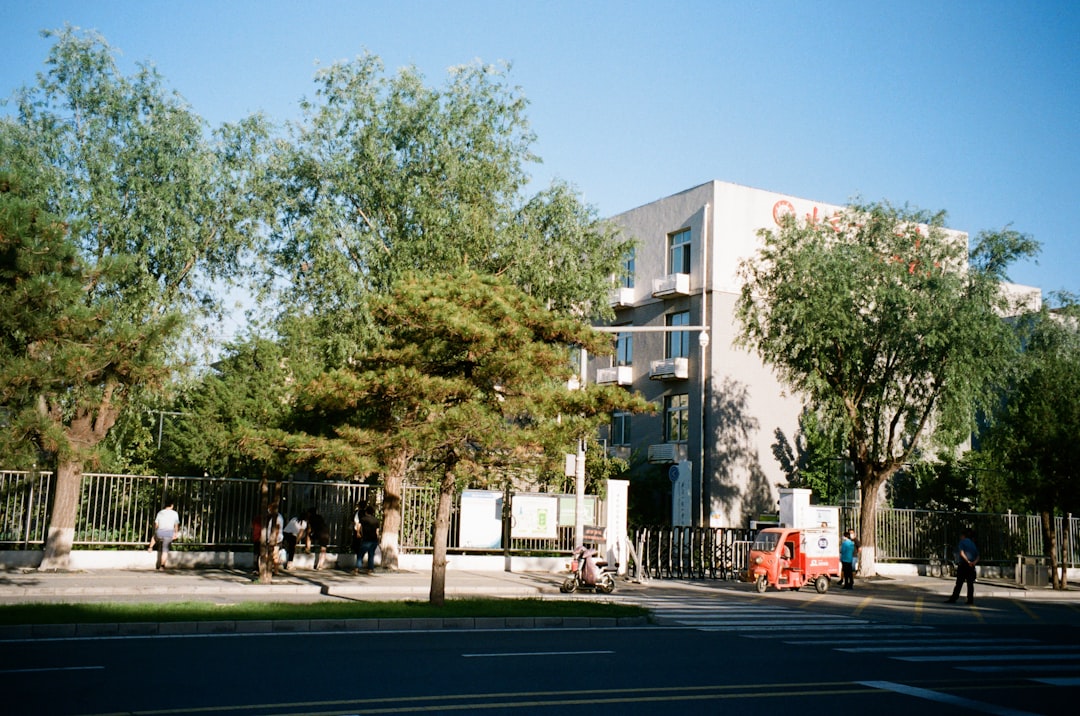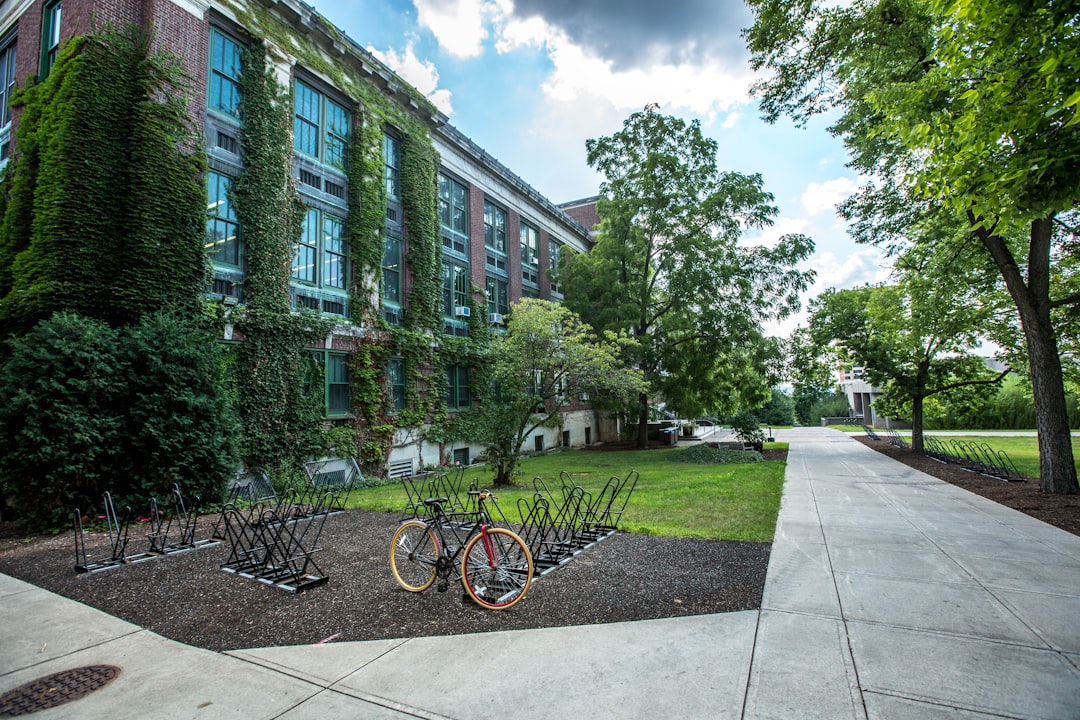Introduction to School Funding and Property Taxes
School funding models in the U.S. Local communities and homeowners heavily rely on property taxes, impacting local communities and homeowners. Understanding the intricacies of school funding and its connection to property taxes is crucial for homeowners to make informed decisions about their investments. For example, in states like California, property tax revenue plays a significant role in financing K-12 education, shedding light on the importance of this funding source for supporting educational initiatives. By exploring the relationship between school funding and property taxes, homeowners can gain valuable insights into the financial landscape of their communities and the implications for their real estate transactions.
The Arbor Move Real Estate Team aims to educate homeowners on the dynamic interplay between school funding and property taxes, providing guidance tailored to their real estate transactions. By delving into the impact of school funding on property taxes, homeowners can navigate the complexities of the real estate market with confidence, leveraging insights to maximize their investments and contribute to thriving local communities. The transparency of property tax allocations offers residents a clear view of how their financial contributions directly impact the quality of education in their neighborhoods, fostering accountability and community engagement.
The Basics of School Funding and Property Taxes
Property tax revenue covers a substantial portion of K-12 public school spending in the United States, offering insights into community financial allocations. Alongside property taxes, some regions also utilize local sales or income taxes to supplement funding for K-12 education, showcasing a multifaceted approach to financing schools. For instance, in Michigan, a combination of property taxes and state aid forms the foundation of school funding, illustrating the diverse strategies states employ to support educational systems. By understanding the intricate balance between property taxes and alternative revenue sources, stakeholders can advocate for equitable distribution of resources to ensure all students have access to a quality education.
Local sales or income taxes can also play a crucial role in supplementing property tax contributions to fund K-12 education in various states, highlighting the complex nature of educational financing. By examining the variations in school funding sources across states, policymakers can identify areas for improvement and advocate for a more equitable distribution of resources to enhance educational opportunities for all students. The utilization of different revenue streams underscores the need for a comprehensive approach to school funding that considers the unique needs of each community while striving for equity in resource allocation.
The Impact of School Funding on Property Taxes
The impact of school funding on property taxes extends beyond financial obligations for homeowners, influencing the socio-economic landscape of communities. Fluctuations in school funding levels can directly correlate with changes in property tax rates, affecting homeowners’ financial commitments. In affluent neighborhoods with higher property values, increased funding for local schools may lead to higher property tax burdens for homeowners, showcasing the direct link between school funding and property taxes. Conversely, homeowners in areas with lower property values may experience reduced property tax obligations due to lower school funding levels, highlighting the implications for property values and community resources.
Moreover, the relationship between school funding and property taxes can perpetuate socio-economic inequities based on neighborhood property values, impacting educational outcomes. Disparities in school funding can lead to variations in educational resources and opportunities for students, underscoring the broader social implications of education finance on property owners. For example, disparities in per-student spending between districts like Chicago Ridge and Rondout highlight how local property tax revenues can significantly affect educational outcomes, emphasizing the importance of equitable distribution of resources. By addressing these disparities, communities can strive for a more level playing field in education and property values.
 Understanding Property Tax Programs and State Aid
Understanding Property Tax Programs and State Aid
Property tax programs serve as a critical component of funding K-12 education, with mechanisms like “circuit breakers” offering relief to low-income homeowners. In states like Massachusetts, the implementation of “circuit breakers” has proven beneficial in alleviating the tax burden on financially vulnerable property owners, contributing to a fairer distribution of school funding resources. These programs not only support homeowners but also ensure that schools receive the necessary financial backing to offer quality education to all students, irrespective of their economic circumstances.
Additionally, disparities in state aid distribution can impact the overall funding landscape for schools, with outdated formulas and economic fluctuations influencing funding levels. Historical policies like California’s Proposition 13 have reshaped the state’s education finance system, underscoring the need for ongoing reforms to address funding adequacy and equity. By examining state aid mechanisms and property tax contributions, policymakers can work towards creating a more balanced and sustainable funding model that caters to the diverse needs of students and educators across the country. The complexities of state aid distribution highlight the importance of striking a delicate balance between different funding sources to ensure stable and equitable school funding.
 The Role of Federal Funding During the COVID-19 Pandemic
The Role of Federal Funding During the COVID-19 Pandemic
Federal funding initiatives such as the CARES Act and the American Rescue Plan Act played a crucial role in supporting K-12 education during the COVID-19 pandemic. These financial injections addressed immediate educational needs, including technology upgrades for virtual learning, meal provision for students, and mental health support services. For example, schools utilized these funds to implement safety measures, enhance remote learning capabilities, and support students’ well-being during a time of unprecedented challenges.
The COVID-19 pandemic underscored the resilience and stability of property taxes as a primary revenue source for funding K-12 education, highlighting the importance of this funding model in times of crisis. Despite economic uncertainties, property taxes remained a transparent and reliable foundation for supporting schools, offering insights into the allocation of financial resources within communities. As states navigated the complexities of responding to the pandemic, the utilization of federal funding to supplement local property tax revenues varied, reflecting diverse approaches to education finance across different regions. By leveraging federal funding in conjunction with property taxes, communities could adapt to the evolving educational landscape and address the immediate needs of students and educators.
Case Studies: Variations in School Funding Approaches
In Michigan, the tax swap of 1994 aimed to boost state education aid but faced challenges in effectively reaching students most in need. This case exemplifies the complexities of school funding reforms and the importance of ensuring that financial support translates into tangible benefits for students from diverse backgrounds. By examining Michigan’s experience, policymakers can glean insights into the intricacies of education finance and the challenges associated with equitable resource distribution.
California’s Proposition 13 and subsequent school finance reforms reshaped funding dynamics, impacting local control and educational quality in the state. The effects of Proposition 13 highlight the far-reaching consequences of changes in school finance policies and the importance of balancing local control with equitable resource allocation. California’s journey through these reforms underscores the significance of considering the implications of funding mechanisms on educational outcomes and community engagement.
Massachusetts’ Proposition 2½ and Education Reform Act targeted aid to disadvantaged districts, emphasizing the need for equitable distribution of education funding. This case study showcases a targeted strategy aimed at uplifting communities in need and enhancing educational opportunities for all students, regardless of their socio-economic backgrounds. By focusing on aiding districts facing challenges, Massachusetts sets a precedent for equitable resource allocation in education finance.
The Disparity in School Funding
Disparities in school funding are starkly evident in the comparison of per-student spending between districts like Chicago Ridge and Rondout, highlighting the impact of local property tax revenues. The significant variations in per-student spending underscore the need for a more equitable distribution of resources to ensure all students have access to quality education. Ongoing lawsuits challenging unfair school funding systems emphasize the urgency of addressing funding disparities to create a level playing field for students. By advocating for equitable resource allocation, communities can strive to enhance educational outcomes and opportunities for all students, regardless of their zip code.
Lawsuits in 13 states challenge unfair school funding systems, with historical cases like San Antonio Independent School District v. Rodriguez shaping the debate. These legal challenges underscore the importance of advocating for equitable resource allocation in education finance to ensure that all students have access to quality education. Schools in low-wealth districts often face budget cuts and resource challenges, necessitating innovative strategies to support students in underfunded environments. By addressing funding disparities, communities can work towards creating a more inclusive and equitable educational system that benefits all students.
Recommendations for School Funding Reforms
The Lincoln Institute for Land Policy advocates for a progressive school funding system that combines property tax programs with state aid to address financial disparities and student needs nationwide. By harmonizing these two funding sources, the aim is to create a more equitable distribution of resources and cater to the varying needs of students across the country. Balancing state aid and property tax contributions is essential for achieving stable, adequate, and equitable school funding, requiring careful consideration of community needs and available resources. This delicate balance is crucial for ensuring that all students have access to quality education, regardless of their economic circumstances.
Implementing reforms to address existing inequities in school funding can lead to more equitable educational outcomes and opportunities for students from diverse backgrounds. By advocating for comprehensive reforms, policymakers can work towards creating a more just and inclusive educational system that benefits all students. Achieving a delicate balance between state aid and property tax contributions is key to fostering a stable, adequate, and equitable school funding system that supports the diverse needs of students and educators nationwide. These recommendations serve as a roadmap for policymakers to create a more inclusive and equitable educational landscape that benefits all students.
 The Importance of Education Funding for Local Communities
The Importance of Education Funding for Local Communities
Education funding serves as a cornerstone for community development, influencing property values, economic growth, and overall quality of life in neighborhoods. Equitable school funding is integral to fostering academic success and social mobility, ensuring that all students have access to high-quality education regardless of their background. By investing in education at the local level, communities can promote workforce development, civic engagement, and long-term prosperity. Quality schools are often a driving force behind property values, attracting homebuyers and investors seeking areas with strong educational foundations. This, in turn, contributes to community growth and vitality, creating a cycle of prosperity that benefits residents and businesses alike.
Moreover, education funding plays a crucial role in shaping the social fabric of communities, fostering civic pride and engagement among residents. When schools receive adequate funding, they can offer a wide range of educational opportunities, extracurricular activities, and support services that enrich students’ learning experiences. This, in turn, contributes to the overall well-being and vibrancy of the community, attracting families and businesses looking for areas with strong educational infrastructure. By investing in education, communities can create a positive cycle of growth and development that benefits residents of all ages.
 How School Funding Affects Homeowners
How School Funding Affects Homeowners
The impact of school funding on property taxes directly influences homeowners in local communities, shaping their financial obligations and real estate investments. Understanding the relationship between school funding and property taxes is essential for homeowners to make informed decisions about buying, selling, or investing in real estate. For example, changes in school funding levels can lead to fluctuations in property tax rates, impacting homeowners’ financial planning and property values. By recognizing the direct correlation between school funding levels and property taxes, homeowners can navigate the real estate market with confidence, leveraging insights to maximize their investments.
Moreover, the connection between school funding and property taxes extends beyond financial considerations to encompass broader community implications. Homeowners in areas with well-funded schools often benefit from a more vibrant local economy, increased demand for housing, and enhanced community services. For instance, neighborhoods with top-performing schools tend to attract homebuyers willing to pay premium prices, leading to property value appreciation and community development. By understanding how school funding influences property taxes, homeowners can strategically navigate the real estate market, leveraging the educational landscape to make informed decisions that align with their long-term financial goals and lifestyle preferences.
Why Choose the Arbor Move Real Estate Team
The Arbor Move Real Estate Team offers unparalleled expertise in navigating the Ann Arbor housing market, positioning them as trusted advisors for clients seeking insights into how school funding impacts property values and real estate transactions. By partnering with the Arbor Move team, homeowners gain access to a network of reputable lenders, inspectors, and title companies, ensuring comprehensive support throughout their real estate journey. The team’s commitment to excellence and personalized guidance enables homeowners to understand the implications of school funding on their property taxes and investments, empowering them to make informed decisions.
When considering real estate transactions in Ann Arbor, choosing the Arbor Move Real Estate Team provides homeowners with valuable insights into the intersection of school funding and property values. By leveraging the team’s expertise and market knowledge, homeowners can maximize their real estate investments and contribute to thriving local communities. The Arbor Move team’s dedication to providing tailored solutions that align with clients’ property goals and educational priorities ensures a seamless and informed home buying or selling experience. Contact the Arbor Move Real Estate Team today to explore real estate opportunities in Ann Arbor with a focus on education funding and property tax considerations.
Conclusion: Empowering Homeowners with Knowledge
Empowering homeowners with knowledge about school funding and its impact on property taxes is essential for making informed real estate decisions that align with their financial goals and community values. By understanding the complexities of education finance and property tax dynamics, homeowners can navigate the real estate market with confidence, leveraging insights to maximize their investments. Take the next step in your real estate journey by partnering with the Arbor Move Real Estate Team, dedicated to providing personalized guidance and expertise in aligning your property goals with the educational landscape of Ann Arbor. Visit Arbor Move Real Estate Team to learn more and start your informed real estate experience today.



 Influence of School Ratings on Home Prices
Influence of School Ratings on Home Prices School Expenditures and Property Values
School Expenditures and Property Values School Characteristics and Home Value
School Characteristics and Home Value Trends in the Housing Market
Trends in the Housing Market The Arbor Move Real Estate Team Advantage
The Arbor Move Real Estate Team Advantage Explore More with Arbor Move Real Estate Team
Explore More with Arbor Move Real Estate Team
 How School Performance Affects Property Prices
How School Performance Affects Property Prices The Seller’s Advantage: Leveraging School Districts to Attract Buyers
The Seller’s Advantage: Leveraging School Districts to Attract Buyers Utilizing Online Tools to Evaluate School Districts
Utilizing Online Tools to Evaluate School Districts School Districts as a Factor in Real Estate Investment
School Districts as a Factor in Real Estate Investment Challenges and Considerations
Challenges and Considerations Navigating the Complexities of School Districts and Real Estate Values
Navigating the Complexities of School Districts and Real Estate Values Comprehensive Decision-Making in Real Estate
Comprehensive Decision-Making in Real Estate
 The Role of School Funding in Property Values
The Role of School Funding in Property Values Socioeconomic Effects of School Quality on Real Estate Markets
Socioeconomic Effects of School Quality on Real Estate Markets The Brighton, MI Example: A Case Study of Real Estate Value and School Quality
The Brighton, MI Example: A Case Study of Real Estate Value and School Quality Conclusion: Empowering Real Estate Decision-Making Through School Quality Insights
Conclusion: Empowering Real Estate Decision-Making Through School Quality Insights
 Research Findings on School Influence
Research Findings on School Influence Conclusion: Key Considerations for Real Estate Buyers and Sellers
Conclusion: Key Considerations for Real Estate Buyers and Sellers

 The Impact of School Districts on Home Values
The Impact of School Districts on Home Values

